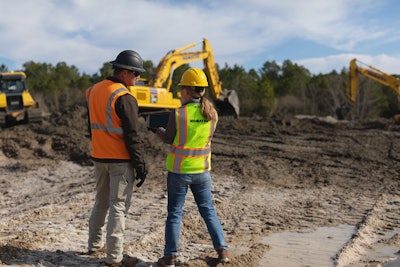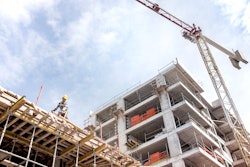
Construction input or material prices have dropped again, when comparing August's numbers to July, but were up nearly 17% from a year ago.
The price of materials and services used in nonresidential construction declined by 1.4% from July to August as a steep drop in fuel prices masked increases in the cost of other construction inputs, according to analysis of U.S. Bureau of Labor Statistics Producer Price Index data.
Many contractors expect to pass along cost increases to project owners during the months ahead. However, with rising borrowing costs and the risk of recession, project owners may become increasingly resistant to elevated costs for the delivery of construction services.
“The price report highlights the mixed conditions contractors are experiencing, with many costs still rising sharply while others take a breather,” said Ken Simonson, chief economist for the Associated General Contractors of America. “Meanwhile, an industry survey we recently released found that supply-chain issues and labor availability are delaying many construction projects.”
Prices of several widely used goods rose in August, partially offsetting price declines in fuel, lumber and some metal products. Natural gas prices increased 35.3%, followed by unprocessed energy materials prices, which rose 13.5%.
These increases were more than offset by one-month decreases in August in the index for diesel fuel, down 13.4%; steel mill products, down 5.7%; aluminum mill shapes, down 3.9%; and lumber and plywood, down 2.9%. Crude petroleum prices were down 5.3% in August.
The fuel price drop contributed to a 1.9% fall in the index for truck transportation of freight.
Also, the index for energy used in nonresidential construction plunged 13.1% for the month. In contrast, the index for goods other than energy and food rose 0.3% after declining for two months. The index for services was similarly mixed, with an overall dip of 0.4% but with a 1.2% increase in the index for services other than trade, transportation and warehousing.
Anirban Basu, chief economist for the Associated of Builders and Contractors, said the latest index report provides more evidence that wholesale inflation is edging lower. “While this may create a sense of relief among contractors, this is no time for complacency,” he said. “With Covid-19 lockdowns persisting in China, the world's leading manufacturer, and Europe facing severe energy crises, supply-chain disruptions will persist.”
The expectation is that construction materials and equipment prices will likely remain elevated, even if year-over-year price increases are moderate. In addition, Basu noted that public construction workers remain in short supply.
“The upshot is that inflation is poised to remain stubbornly high even as some begin to declare victory,” Basu said. “Estimators and others in the construction industry should be on guard for occasional surges in inflation during the months ahead."
“Based on nonresidential construction spending data, that process has already begun,” Basu added. “Accordingly, contractors should remain laser-focused on cashflow and weeding out costs as opportunities arise."















